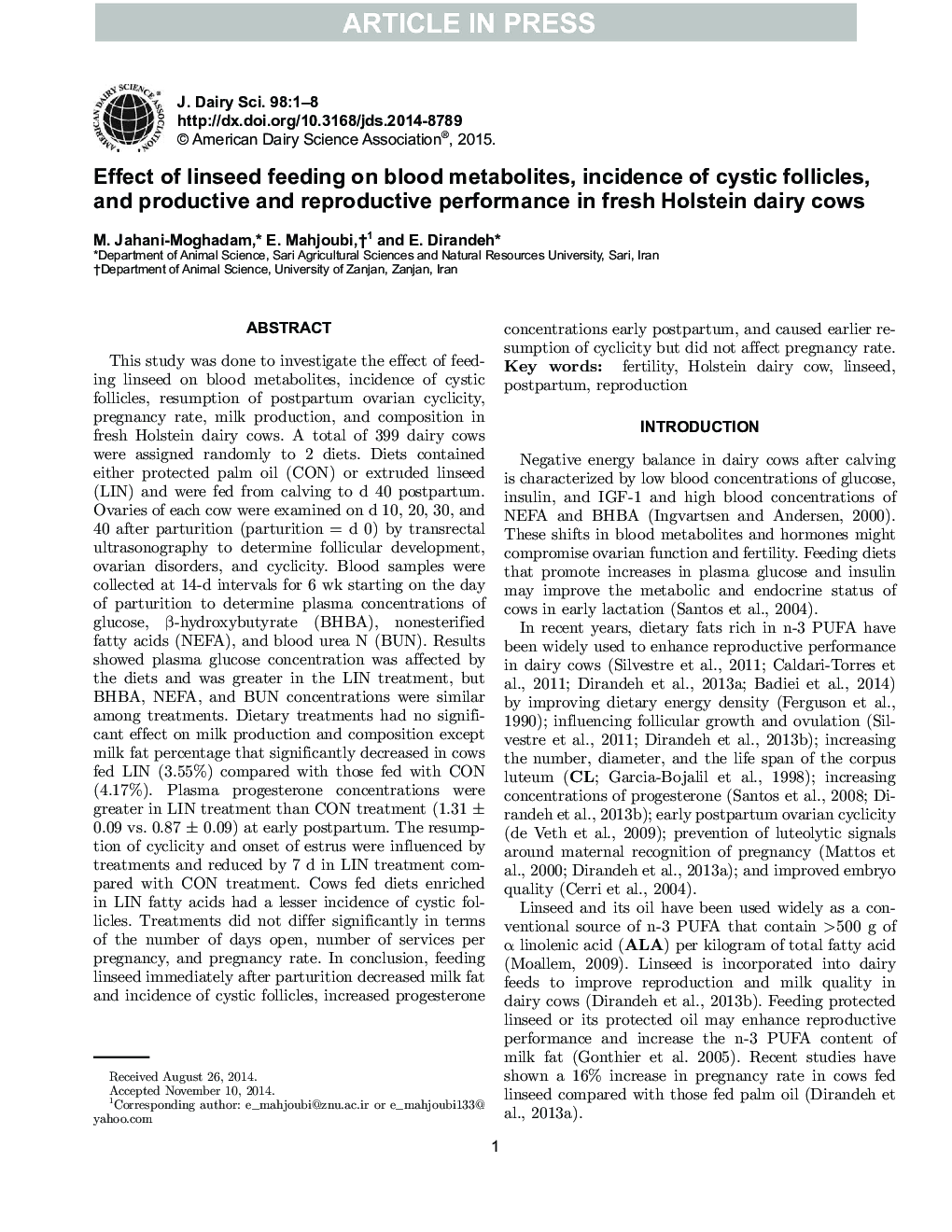| Article ID | Journal | Published Year | Pages | File Type |
|---|---|---|---|---|
| 10976460 | Journal of Dairy Science | 2015 | 8 Pages |
Abstract
This study was done to investigate the effect of feeding linseed on blood metabolites, incidence of cystic follicles, resumption of postpartum ovarian cyclicity, pregnancy rate, milk production, and composition in fresh Holstein dairy cows. A total of 399 dairy cows were assigned randomly to 2 diets. Diets contained either protected palm oil (CON) or extruded linseed (LIN) and were fed from calving to d 40 postpartum. Ovaries of each cow were examined on d 10, 20, 30, and 40 after parturition (parturition = d 0) by transrectal ultrasonography to determine follicular development, ovarian disorders, and cyclicity. Blood samples were collected at 14-d intervals for 6 wk starting on the day of parturition to determine plasma concentrations of glucose, β-hydroxybutyrate (BHBA), nonesterified fatty acids (NEFA), and blood urea N (BUN). Results showed plasma glucose concentration was affected by the diets and was greater in the LIN treatment, but BHBA, NEFA, and BUN concentrations were similar among treatments. Dietary treatments had no significant effect on milk production and composition except milk fat percentage that significantly decreased in cows fed LIN (3.55%) compared with those fed with CON (4.17%). Plasma progesterone concentrations were greater in LIN treatment than CON treatment (1.31 ± 0.09 vs. 0.87 ± 0.09) at early postpartum. The resumption of cyclicity and onset of estrus were influenced by treatments and reduced by 7 d in LIN treatment compared with CON treatment. Cows fed diets enriched in LIN fatty acids had a lesser incidence of cystic follicles. Treatments did not differ significantly in terms of the number of days open, number of services per pregnancy, and pregnancy rate. In conclusion, feeding linseed immediately after parturition decreased milk fat and incidence of cystic follicles, increased progesterone concentrations early postpartum, and caused earlier resumption of cyclicity but did not affect pregnancy rate.
Related Topics
Life Sciences
Agricultural and Biological Sciences
Animal Science and Zoology
Authors
M. Jahani-Moghadam, E. Mahjoubi, E. Dirandeh,
